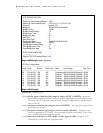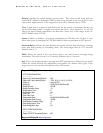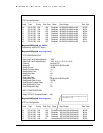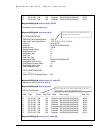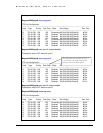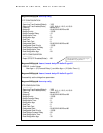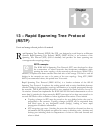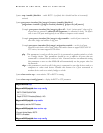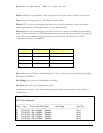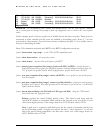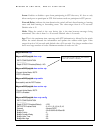
MAGNUM 6K SWITCHES, MNS-6K USER GUIDE
• STP relays configuration messages received on the root port going out of its
designated ports. If an STP switch (bridge) fails to receive a message from its
neighbor it cannot be sure where along the path to the root a failure occurred.
RSTP switches (bridges) generate their own configuration messages, even if they
fail to receive one from the root bridge. This leads to quicker failure detection
• RSTP offers edge port recognition, allowing ports at the edge of the network to
forward frames immediately after activation while at the same time protecting
them against loops
• An improvement in RSTP allows configuration messages to age more quickly
preventing them from “going around in circles” in the event of a loop
RSTP has three states. They are discarding, learning and forwarding.
The discarding state is entered when the port is first taken into service. The port does not
learn addresses in this state and does not participate in frame transfer. The port looks for
STP traffic in order to determine its role in the network. When it is determined that the
port will play an active part in the network, the state will change to learning. The learning
state is entered when the port is preparing to play an active member of the network. The
port learns addresses in this state but does not participate in frame transfer. In a network
of RSTP switches (bridges) the time spent in this state is usually quite short. RSTP
switches (bridges) operating in STP compatibility mode will spend between 6 to 40
seconds in this state. After ‘learning’ the bridge will place the port in the forwarding state.
While in this state the port both learns addresses and participates in frame transfer while
in this state.
The result of these enhanced states is that the IEEE 802.1d version of spanning tree
(STP) can take a fairly long time to resolve all the possible paths and to select the most
efficient path through the network. The IEEE 802.1w Rapid reconfiguration of Spanning
Tree significantly reduces the amount of time it takes to establish the network path. The
result is reduced network downtime and improved network robustness. In addition to
faster network reconfiguration, RSTP also implements greater ranges for port path costs
to accommodate the higher connection speeds that are being implemented.
Proper implementations of RSTP (by switch vendors) is designed to be compatible with
IEEE 802.1d STP. GarrettCom recommends that you employ RSTP or STP in your
network.
Transition from STP to RSTP
IEEE 802.1w RSTP is designed to be compatible with IEEE 802.1D STP. Even if all the other
devices in your network are using STP, you can enable RSTP on your Magnum 6K family of
switches. The default configuration values of the RSTP available in MNS-6K software will ensure
that your switch will interoperate effectively with the existing STP devices. RSTP automatically
detects when the switch ports are connected to non-RSTP devices using spanning tree and
communicates with those devices using 802.1d STP BPDU packets.
160



